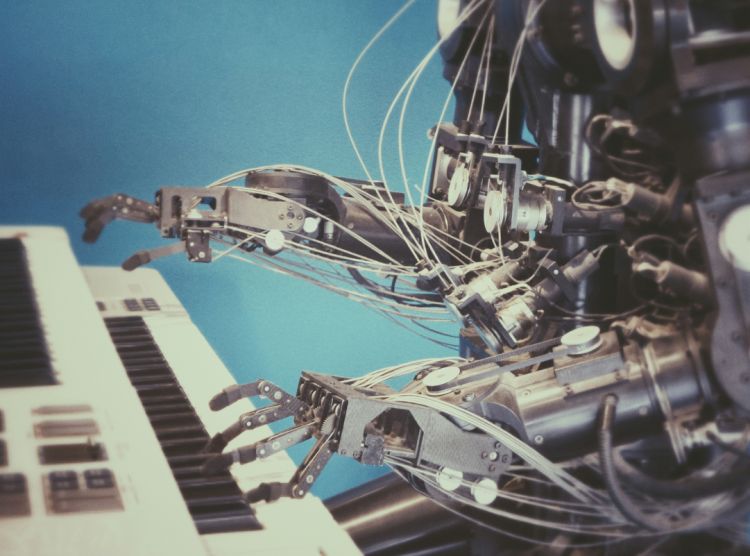Media Industries and Cultural Production Research Group Event with Dr Nur Kareelawati Abd Karim and Dr Sami Hajjaj

- Date: Wednesday 24 April 2024, 11:00 – 12:00
- Location: Clothworkers North Building SR (1.17)
- Cost: Free
This event comprises of two talks from Dr Nur Kareelawati Abd Karim and Dr Sami Hajjaj
Conceptualising the 'Malay' Production Culture for a Sustainable Film and Television Industry
The Malay film and television industry has faced significant challenges in recent years, including competition from international film markets, changing audience platform preferences, and, most critically, the production talent pipelines. Dr Karim's study aims to conceptualise the 'Malay' production culture by addressing its unique features, values and practices. It delves into how Malay cultural values should/ought to be moulded for a more sustainable film and television industry. The argument is two-fold: first, that religion (Islam) and nationhood interact (sometimes clash) with the culture and diverse worldviews of the production community and, therefore, have affected the production quality and labour. Second, the growing competitive individualism within the Malay production community needs to be balanced—particularly in the efforts to bridge the age and skills competency gaps. Most elder quarters of Malay production workers tend to think that the Islamic worldview is more important than others; they perceive work as a religious duty. They believe that collectivism steers the production community and will be rewarded in the afterlife. The study suggests that increasing competitive individualism among younger production workers (below 30 years old) hindered the ageing (above 50) production community from transferring their skills and professional experiences. Thus, it raises the question of how the lack of individualism among senior Malay Muslim production workers helps tempt those (young) competitive and technological savvies in the field. Therefore, it may strengthen collective efforts and help create better content and a more humanised workplace. This study may answer why Malay films or television dramas take the forms they do. Subsequently, it illuminates how production culture can influence creative decisions and how production workers should be managed for a more sustainable film and television industry in Malaysia.
Dr Nur Kareelawati Abd Karim is Associate Professor in Communication and Media Studies at the Universiti Sains Islam Malaysia. She is also a Bridge USA exchange research scholar sponsored by Tulane University, USA and serves on the National Film Development Corporation (FINAS) panels: the Digital Content Fund and Malaysia Creative Capacity Enhancement Program (MyCAP). Dr Karim’s research focuses on the production and working conditions in Malaysian media and investigates the role of religion, ethnicity, gender and age in the screen industries.
Creative Robotics vs. Human-Robot Interaction: Exploring Differences, Similarities and Collaboration
The fields of Robotics for the Creative Industries (R4CI) and Human-Robot Interaction (HRI) intersect in their exploration of human-robot interactions but diverge in their applications and scopes. R4CI focuses on leveraging robotics and related technologies to enhance artistic expression and engagement within film, music, gaming, visual arts, and performing arts. This field aims to push the boundaries of traditional artistic mediums by incorporating robots into creative processes, leading to innovations like robotic characters in films, interactive installations in art exhibitions, and robotic instruments in music production. On the other hand, HRI encompasses a broader study of interactions between humans and robots across diverse contexts, including industrial, healthcare, and domestic settings. It investigates topics such as user interfaces, social robotics, human factors, and ethical considerations to ensure that robots can effectively communicate, collaborate, and coexist with humans in various environments. Despite their distinct focuses, R4CI and HRI share commonalities in their emphasis on designing robots for intuitive, safe, and ethical interactions with humans. Opportunities for collaboration arise from integrating insights from HRI research into creative robotics, thus enhancing robots' understanding of human behaviours, emotions, and preferences to improve artistic experiences. Conversely, innovations in R4CI can inspire advancements in HRI, fostering more natural and engaging interactions between humans and robots across multiple domains. In this talk, the speaker will expand on these themes, provide concrete examples, and illustrate how R4CI and HRI collaboration can spark innovation and creativity, unlocking new possibilities in both fields.
Dr Sami Hajjaj is Associate Professor and Program Director at the School of Robotics from the Entrepreneur College (Taicang) at X'ian Jiaotong-Liverpool University (XJTLU) in Suzhou, China. Dr Hajjaj’s research focuses on integrated robotics-IoT-AI systems, or engineering solutions that combine automation & robotics, the Internet of Things, and Artificial Intelligence systems. Additionally, he is interested in the social aspects of Robotics, HRI, and Robotics education. He incorporated these themes in past projects, such as developing interactive robot interfaces for agriculture robots, enhancing remote robot interaction for online classes and remote learning, and developing IoT-enabled robotic cameras for the TV & Film industry. In his upcoming projects, he intends on exploring the use of Robotics for artistic and cultural expression.

